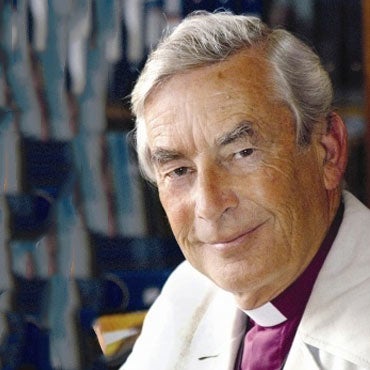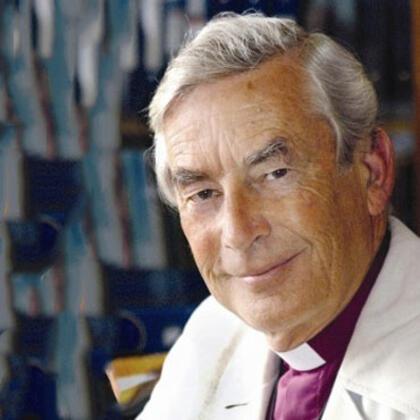Christian Themes in Art: The Resurrection in Art
Share
- Details
- Text
- Audio
- Downloads
- Extra Reading
This is the most difficult of all Christian themes to convey in visible form and the early church approached it with proper reticence. Whilst the Western Church developed an over-literalistic image, the Orthodox Church gave it a powerful symbolic rendering. The 20th century, with its massive suffering, found this hopeful theme particularly problematic.
Download Text
The Resurrection in Art
The Rt Revd Lord Harries of Pentregarth
Gresham Professor of Divinity
Dura Europos, a town on the frontier of the Roman and Persian Empire where a synagogue and house church, the earliest known and dating from early 3rd century, have been discovered under the ruins. Murals on walls of both synagogue and church.
The three women approach the tomb.
The catacombs. No scene of the empty tomb or resurrection but faith expressed through raising of Lazarus. “I am the Resurrection and the Life” (John chapter 11) and the story of Jonah.
Jesus raising Lazarus
The story of Jonah
The cross and the resurrection seen together as a unified victory. See previous lecture on the Passion in Art.
4th century sarcophagus.
Four panels in British Museum dating from 420. The earliest depiction of Christ on the Cross, a unified passion scene of Christ carrying the cross, Pilate washing his hands and Peter denying Christ, plus these two witnessing to the Resurrection. Note the scenes on the door of the tomb. Profound reticence about showing resurrection of Christ itself. (Not described in Gospels) So women at empty tomb a favourite theme. The tomb in the shape of the rotunda built over the place where Christ was buried in Jerusalem seen by pilgrims. The fact that the place could be seen and depicted an important witness. From 8th century it tended to become a cave. Two women usually shown, and this became standard. The Rhomboid shape of the door of the tomb becomes itself a symbol of the resurrection in some works.
Maries at the empty tomb:
Ivory in British Museum, 420
Mosaic in St Apollinare Nuevo, 6th century.
Ivory, 9th century
Ivory, 10th century
Irakli Parjiana, Georgian artist, 195--1991
Matthew 28, 9-10, tells how as the women were coming away from the tomb Christ met them with the word, Chairete, All Hail.
“A woman was the cause for the loss of paradise, but now she brings good tidings of the resurrection; she pulled the first Adam to the fall but now she announces he resurrection of the second Adam.” Athanasius in 4th century. Later one of the Maries became identified with Mary the mother of Jesus. Romanos, 6th century poet has Mary meeting her son on the way to the cross, and she is told “Courage, mother because you will see me first on my coming from the tomb. Sometime Christ is to one side and the women on the other, and sometimes they are either side of him. Sometimes the Chairete and the woman at the empty tomb appear together
The Chairete
Drawing of 4th century sarcophagus
Wooden doors of St Sabina in Rome, 430
Rabbula Gospels, 586
Mosaic in St Mark’s, Venice, 12th century
Byzantine Ivory, 12th century
The scene of the women at the empty tomb (Myrophores, or perfume bearers) and Doubting Thomas (The incredulity of Thomas) remain the main two ways of witnessing to Christ’s resurrection in the early period. Pilgrims to the Holy Land brought back ampullae with one scene on the front and one on the back.
The incredulity of Thomas, ivory, 420
Ampullae, Woman at the empty tomb. (Ascension on the back). Monza, 6th century.
By the 8th century the church had made its decision about Christ as fully human and fully divine, yet remaining one person. This freed artists to show Jesus as dead on the cross (i.e. fully human-see previous lecture) and at the same time to show him truly divine in overcoming death by delivering souls from limbo. This image of the Anastasis remains the definitive image of the resurrection for the Orthodox church. Based on 1 Peter 3, 18-20, the iconography developed in part on the image of the Roman emperor liberating a city, with the details reflecting the 6th century apocryphal gospel of Nicodemus. This tells how the two sons of Simeon in Hades were called by Joseph of Arimathea to witness to the Jewish authorities of how they saw a great light, with Christ bursting the gates of Hell and liberating the righteous departed, with Psalm 24 ringing in their ears. David (with beard) and Solomon witness to the human descent of Christ. John the Baptist who said Light would shine in our darkness is also a witness. Abel the shepherd, the first innocent person to die, whose blood cried to God, is the first to redeemed by the blood of Christ. He is the son of Eve, Jesus the son of the new Eve, Mary. Sometimes the emphasis is on Christ, sometimes on the conquest of death. The theme of the Harrowing of Hell is present in the West , but its most powerful expression is in the Mystery Plays and in poetry. The third flowering of Byzantine art under the Palaiologian dynasty before the fall of Constantinople in 1453, produced the superb fresco in the mortuary chapel of the church of the Chora.
The Anastasis:
Mosaic at Hosios Loukas, 1020
Fresco Nea Moni,Chios, 11th century
Mosaic at Daphni, 1100
Mosaic at Torcello, Venetian Lagoon, 12th century
Modern Icon
Carving in Bristol Cathedral
Mantegna and studio, Descent into Limbo, 1470
Fresco in the Church of the Chora, Istanbul, 14th century
The reticence which characterised the Eastern Church in declining to show the act of Resurrection itself, was not maintained in the West. Christ is shown striding out of the tomb with the flag of a victor. Aldous Huxley described Piero della Franscesca’s version in Sansepolcro as “The best picture in the world”. For him it expressed a classical, humanist vision. “It is the resurrection of the classical ideal, incredibly much grander and more beautiful than the classical reality, from the tomb where it had laid for so many hundreds of years.” Bramantino’s haunting picture shows Christ carrying the marks of death.
Jesus rising from the tomb,Ugolino, active 1317-27
Resurrection by Piero della Franscesca, 1410/20-92
Christ raised from the dead, Bramantino, 1465-1530
Michaelangelo, 1475-1564
Mattias Grunewald, part of the Isenheim altarpiece, 1460-1528
The appearance of the risen Christ to Mary Magdalene (John 20) was not depicted in early Christian art in the East because it was thought appropriate that he should appear first to his mother, hence the popularity of the Chairete scene. She was only depicted later in the East because of Western influence. In the West there was a growing cult of Mary Magdalene, hence the appearance of the Noli me tangere (Do not touch me) scene from Romanesque art onwards. The highly popular Golden Legend (1255-66) gave five reasons why Christ should have appeared to Mary first. In the middle ages it was assumed that Mary was the same Mary who washed Christ’s feet and who was the notorious sinner, but no evidence for this. The Scrovegni chapel frescos by Giotto influenced not just by Gospel account but by Fransiscan meditations encouraging viewer to be there in an intimate manner. Hair covered and brown head covering, in mourning but not a widow.
Note the Contraposto “leading towards her he also withdraws” expressing tension between Mary’s love and Christ’s desire to lead her into deeper truths. Jesus had promised his followers a joy which nothing could destroy “Do not cling on to me-for I have not yet ascended” i.e. it is to be a spiritual, not a physical presence with her. Augustine saw Contraposto as spiritually, no just aesthetically, significant.
Noli me tangere scenes: John 20, 10-18
Capital in Autun cathedral, 12th century
Scrovegni Chapel, Padua, Giotto, (1267-1337)
Titian, 1487/90-1576
Rembrandt, 1606-69
Magdalene College, Oxford, David Wynne, b.1926
Roy de Maistre, 1894-1968
Chichester Cathedral, Graham Sutherland, 1903-1980
The Emmaus scenes began to be depicted from about the 5th century, but only became firmly established in the East when the whole cycle of resurrection appearances was developed. In the West from the 11th century, when pilgrimage was such an important part of life Christ was often depicted as a fellow pilgrim. Peregrinus means both stranger and pilgrim. In the counter-reformation period, the scene of the supper, with indications of the Eucharist, became increasingly important. Caravaggio, who died at 37 after a story life painted it twice, once with Jesus with a beard and once beardless. Use of light and dark to convey sense of drama and astonishment. The painting by Ceri Richards commissioned by the Junion Common Room of St Edmund Hall in Oxford, where it now hangs in the chapel.
Walk to Emmaus. Supper at Emmaus: Luke 24, 13-35
Mosaic in St Apollinare Nuovo, 6th century
Fresco in Oratory in Novara, 15th century
Mosaic in St Maria, Maggiore, Rome, 5th century
Caravaggio, 1573-1610
Velazquez,1599-1660
Roy de Maistre, 1894-1968
Ceri Richards, 1903-71
The incredulity of Thomas appeared early as the main artistic witness, together with the myrophores, to the resurrection of Christ. (See earlier slides). It has always retained its importance. The Hosios Loukas mosaic shows Peter and Paul with the standard iconography which had developed by the fourth century, Peter white and bearded, Paul, bald with a high domed forehead. Paul, contrary to scripture was depicted as present at the resurrection appearances. The door is fairly standard. Ton thuron Kekleismonon. “The doors were locked.” Caravaggio depicted the scene using people off the streets and both he and Guercino emphasise the physicality of the scrutiny. Mynheer seeks to concentrate on essentials, with the flow of lines conveying the compassion of Christ and the use of gold for glory.
The Incredulity of Thomas: John 20, 26-29
Mosaic in Hosios Loukas, 1020
Ivory in Milan Cathedral, 9th century?
Carving in Cloister at Sto Domingo de Silos, 12th century
Verrochio, 1435-88
Caravaggio, 1573-1610
Guercino, 1591-1666
Nicholas Mynheer, b. 1958
The resurrection as ultimate mystery. The stations of the cross in St Mary’s Roman Catholic church in Manchester have this scene at the end.
Norman Adams, 1927-2005
©Lord Harries, Gresham College 2011
Part of:
This event was on Wed, 16 Feb 2011
Support Gresham
Gresham College has offered an outstanding education to the public free of charge for over 400 years. Today, Gresham College plays an important role in fostering a love of learning and a greater understanding of ourselves and the world around us. Your donation will help to widen our reach and to broaden our audience, allowing more people to benefit from a high-quality education from some of the brightest minds.


 Login
Login







